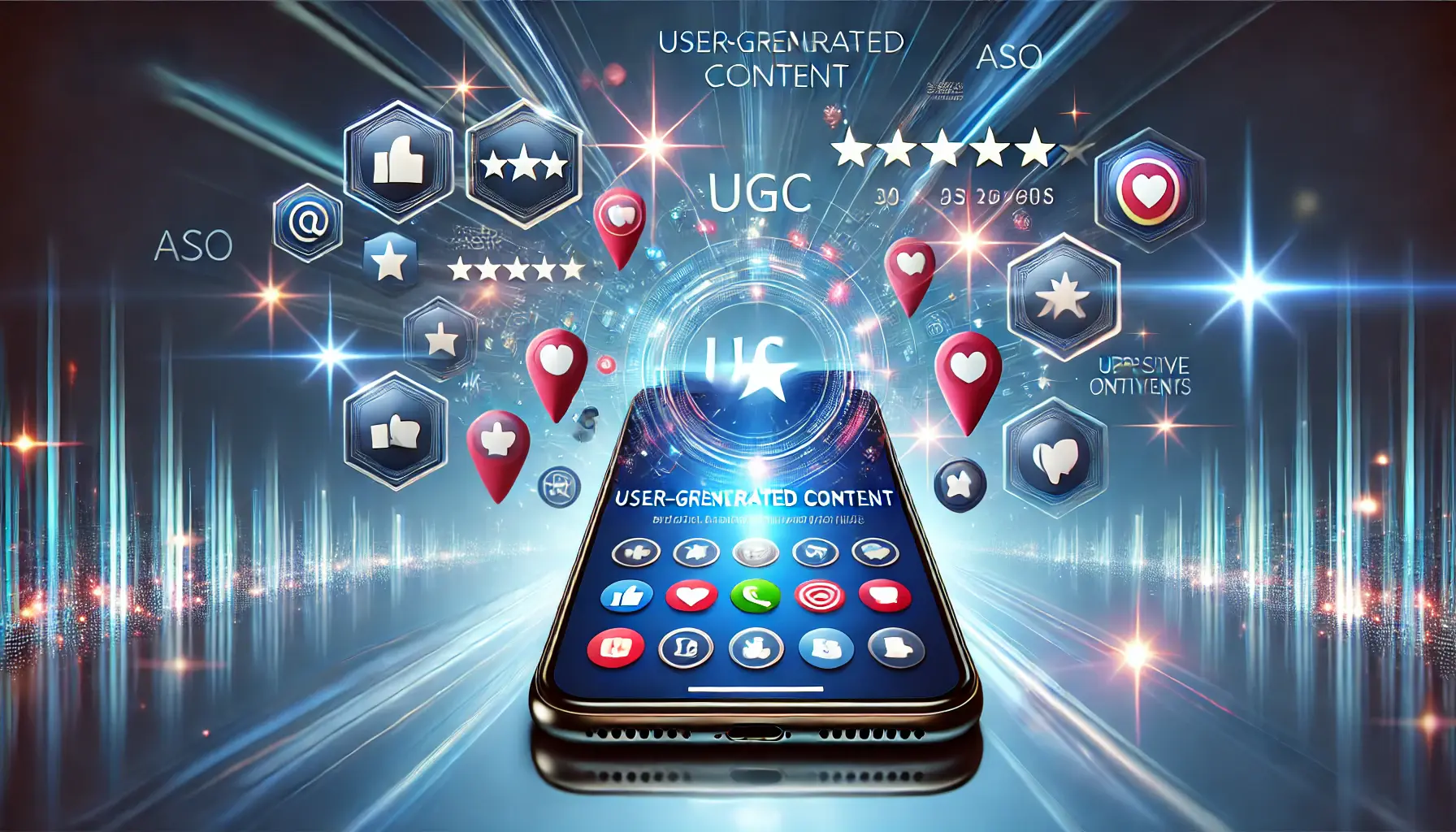The digital landscape has evolved significantly over the past decade, with user-generated content (UGC) emerging as a pivotal force in shaping the dynamics of content marketing.
This transformation has led to a democratization of content creation, where consumers now play a crucial role in content dissemination and brand storytelling.
The essence of user-generated content lies in its authenticity and ability to foster a genuine connection between brands and their audience, making it an invaluable asset in the content marketing toolkit.
At its core, user-generated content encompasses any form of content—be it text, videos, images, reviews, or comments—created by users rather than brands themselves.
This shift towards user-centric content creation marks a departure from traditional marketing strategies, placing consumers at the heart of the narrative.
The impact of UGC on content marketing is profound, as it not only amplifies brand visibility but also enhances engagement, builds trust, and drives conversion rates.
- The Rise of User-Generated Content in Digital Marketing
- Strategies for Incorporating User-Generated Content
- Impact of User-Generated Content on SEO and Web Traffic
- Challenges and Solutions in Managing User-Generated Content
- Measuring the Success of User-Generated Content
- Integrating User-Generated Content Across Digital Platforms
- Future Trends in User-Generated Content
- Embracing the Future with User-Generated Content
- User-Generated Content Impact: FAQs
The Rise of User-Generated Content in Digital Marketing
Authenticity and Trust
In an era where consumers are bombarded with countless marketing messages, the authenticity of user-generated content stands out.
UGC offers a raw, unfiltered perspective of a brand through the eyes of fellow consumers, which is often perceived as more trustworthy and relatable than polished brand messages.
This authenticity fosters a sense of trust among potential customers, making them more inclined to engage with the brand.
The authenticity of UGC enhances consumer trust, driving engagement and loyalty.
Enhanced Engagement and Social Proof
User-generated content naturally encourages higher levels of engagement.
When users see content created by their peers, they are more likely to interact, share, and contribute their own experiences.
This cycle of engagement not only amplifies the brand’s reach but also serves as powerful social proof, influencing the purchasing decisions of potential customers.
Moreover, UGC acts as a catalyst for community building.
Brands that successfully leverage user-generated content create vibrant online communities where users feel valued and heard.
This sense of belonging can significantly enhance customer loyalty and foster long-term relationships between brands and their audience.
Strategies for Incorporating User-Generated Content
Integrating user-generated content into a brand’s content marketing strategy requires thoughtful planning and execution.
The goal is to encourage and curate content from users in a way that aligns with the brand’s objectives while providing value to the audience.
Here are several effective strategies for leveraging UGC to enhance content marketing efforts:
Encouraging User Participation
Creating opportunities for users to share their content is the first step towards building a rich repository of UGC.
Brands can encourage participation through:
- Contests and campaigns that incentivize content creation around specific themes or products.
- Hashtag campaigns on social media platforms to aggregate and showcase user contributions.
- Engaging with user content by liking, commenting, and sharing, which validates their effort and encourages further participation.
Curating and Showcasing UGC
Once users start contributing content, brands need to curate and showcase this content effectively.
This can be achieved by:
- Featuring standout user-generated content on the brand’s website, social media channels, and marketing materials.
- Creating dedicated sections or galleries that highlight user contributions, providing inspiration and recognition for their efforts.
- Employing UGC in email marketing campaigns as testimonials or success stories to add a layer of authenticity and relatability.
Leveraging UGC in marketing materials not only enhances content authenticity but also amplifies user engagement and loyalty.
Managing and Moderating UGC
While user-generated content offers numerous benefits, it also requires careful management and moderation to ensure it aligns with brand values and community guidelines.
Effective UGC management involves:
- Establishing clear guidelines for content submission to ensure appropriateness and relevance.
- Regularly monitoring user contributions to prevent the spread of misinformation or harmful content.
- Engaging with the community to address concerns and feedback, fostering a positive and inclusive environment.
By implementing these strategies, brands can harness the power of user-generated content to enrich their content marketing efforts, driving engagement, trust, and ultimately, conversions.
Impact of User-Generated Content on SEO and Web Traffic
User-generated content not only enriches the brand’s narrative but also plays a significant role in enhancing its search engine optimization (SEO) and driving web traffic.
The organic nature of UGC, combined with its ability to generate fresh, relevant content, makes it a powerful tool for improving a brand’s online visibility and search rankings.
Boosting Keyword Richness and Freshness
User contributions naturally expand the variety and richness of keywords associated with a brand’s online presence.
This diversity in keywords, especially long-tail keywords that are often used in user reviews and discussions, can significantly improve a brand’s SEO performance by aligning with the specific search queries of potential customers.
Additionally, the continuous influx of user-generated content ensures that the brand’s digital platforms remain fresh and updated, a factor that search engines favor when determining rankings.
Enhancing Backlink Profile
UGC often generates external links back to a brand’s website when users share their content on social media platforms, blogs, or forums.
These backlinks serve as endorsements of the brand’s content quality, boosting its authority and credibility in the eyes of search engines.
A robust backlink profile, enriched by diverse and authentic user-generated content, can significantly enhance a brand’s SEO performance and visibility on search engine results pages (SERPs).
Improving Engagement Metrics
Search engines also consider user engagement metrics such as time on site, bounce rate, and page views per visit when ranking websites.
User-generated content, by virtue of its authenticity and relevance, tends to engage readers more deeply than generic brand content.
As users spend more time interacting with UGC, engagement metrics improve, signaling to search engines that the website provides valuable and relevant content, thereby boosting its SEO rankings.
A strategic approach to incorporating UGC can lead to significant improvements in SEO performance and web traffic, leveraging the authentic voices of users to attract more visitors and improve search rankings.
Challenges and Solutions in Managing User-Generated Content
While user-generated content offers numerous benefits to content marketing strategies, managing it presents unique challenges.
These challenges range from ensuring content quality and relevance to addressing legal and ethical considerations.
However, with the right strategies, brands can effectively navigate these challenges and harness the full potential of UGC.
Maintaining Content Quality and Relevance
One of the primary concerns with UGC is maintaining a high standard of content quality and ensuring its relevance to the brand’s audience.
Solutions to these challenges include:
- Implementing moderation tools and processes to review user submissions before they go live, ensuring they meet predefined quality standards and are relevant to the brand’s messaging.
- Creating clear content guidelines for users, outlining what constitutes acceptable and relevant content, to help steer user contributions in the right direction.
Addressing Legal and Ethical Considerations
User-generated content can sometimes raise legal and ethical issues, such as copyright infringement or the sharing of sensitive information.
Brands can address these concerns by:
- Clearly stating terms and conditions for content submission, including copyright policies and user responsibilities regarding content ownership and permissions.
- Actively monitoring and taking down infringing or inappropriate content promptly to mitigate legal risks and maintain a positive community environment.
Encouraging Continuous User Engagement
Keeping users motivated to continuously generate and share content can also be challenging.
Strategies to encourage ongoing engagement include:
- Recognizing and rewarding user contributions through shoutouts, rewards, or featuring their content prominently on brand platforms.
- Engaging with user-generated content by commenting, sharing, and showing appreciation, which fosters a sense of community and encourages further participation.
Effectively managing user-generated content involves addressing quality, legal, and engagement challenges through proactive moderation, clear guidelines, and community engagement strategies.
Measuring the Success of User-Generated Content
For content marketing strategies incorporating user-generated content, establishing metrics to measure success is crucial.
These metrics not only demonstrate the value of UGC but also guide future content strategies.
Understanding what works and what doesn’t allows brands to optimize their approach to UGC, ensuring it contributes effectively to their overall marketing goals.
Engagement Metrics
Engagement metrics are key indicators of how well user-generated content resonates with the audience.
These include:
- Comments and shares: The number of comments and shares a piece of UGC receives indicates the level of audience interaction and interest.
- Likes and reactions: While more passive than comments or shares, likes and reactions still provide insight into content popularity.
- User contributions: The volume of UGC submitted is a direct measure of user engagement and interest in participating in the brand’s narrative.
Conversion Metrics
Ultimately, the goal of any content marketing strategy, including those leveraging UGC, is to drive conversions.
Relevant metrics include:
- Conversion rate: The percentage of users who take a desired action (e.g., make a purchase, sign up for a newsletter) after interacting with UGC.
- Lead generation: The number of leads generated directly from UGC campaigns, indicating its effectiveness in moving users through the sales funnel.
Brand Sentiment Analysis
Understanding how user-generated content affects brand perception is crucial.
Sentiment analysis tools can help brands gauge the overall sentiment of UGC and its impact on brand image.
Positive sentiment in user comments and posts can indicate successful UGC integration, while negative sentiment may highlight areas for improvement.
Success in user-generated content strategies is measured through engagement, conversion, and sentiment analysis, providing valuable insights for optimizing UGC initiatives.
Integrating User-Generated Content Across Digital Platforms
Maximizing the impact of user-generated content requires a strategic approach to its integration across various digital platforms.
A cohesive UGC strategy ensures that content not only reaches a wider audience but also reinforces the brand’s message consistently across all online touchpoints.
Website Integration
Incorporating UGC into a brand’s website can significantly enhance the user experience and provide social proof to potential customers.
Strategies for website integration include:
- Featuring customer reviews and testimonials prominently on product pages to influence purchasing decisions.
- Creating a dedicated UGC gallery or a social wall that showcases real-life customer experiences with the brand’s offerings.
Social Media Utilization
Social media platforms are natural homes for user-generated content, offering vast opportunities for engagement and virality.
Effective utilization involves:
- Sharing standout UGC posts on the brand’s official social media channels to highlight and appreciate user contributions.
- Encouraging hashtag campaigns that make it easy to collect and share user content related to specific campaigns or themes.
Email Marketing Campaigns
Email marketing can be significantly enriched with UGC, making messages more relatable and engaging.
Incorporating UGC into email campaigns can be done by:
- Featuring user reviews or stories in newsletters to showcase the value of the brand’s products or services through real customer experiences.
- Highlighting user-generated photos or videos in promotional emails as a testament to the brand’s community and customer satisfaction.
By strategically integrating user-generated content across websites, social media, and email marketing, brands can leverage UGC to enhance customer engagement, provide social proof, and build a cohesive online presence.
Future Trends in User-Generated Content
The landscape of user-generated content is continuously evolving, driven by technological advancements and changing consumer behaviors.
As we look towards the future, several trends are poised to shape the creation, distribution, and impact of UGC in content marketing strategies.
Augmented Reality and UGC
Augmented reality (AR) offers exciting new possibilities for user-generated content.
Brands are beginning to explore AR to create more immersive and interactive experiences for users.
For example, AR filters on social media platforms allow users to create personalized content featuring a brand’s products, significantly enhancing engagement and providing a novel way for users to interact with brands.
Influence of Artificial Intelligence
Artificial intelligence (AI) is set to play a pivotal role in curating and optimizing user-generated content.
AI technologies can help brands analyze vast amounts of UGC to identify trends, sentiments, and insights, enabling more targeted and effective content strategies.
Additionally, AI can assist in moderating content, ensuring that only relevant and appropriate UGC is showcased, thereby maintaining brand integrity.
User Privacy and Ethical Considerations
As user-generated content continues to grow, so do concerns around user privacy and ethical considerations.
Brands will need to navigate these challenges carefully, ensuring that user content is used responsibly and with explicit consent.
Transparency in how UGC is collected, used, and shared will be crucial in maintaining trust with audiences.
The future of user-generated content is marked by advancements in AR and AI, alongside a heightened focus on user privacy and ethics.
These trends will require brands to adapt their UGC strategies to stay relevant and effective in engaging their audiences.
Embracing the Future with User-Generated Content
The journey through the realm of user-generated content unveils its undeniable impact on content marketing.
As we’ve explored, UGC not only enriches the brand narrative with authenticity and trust but also significantly influences SEO, web traffic, and ultimately, the brand’s relationship with its audience.
The evolution of digital platforms has provided a fertile ground for UGC to flourish, transforming consumers from passive recipients to active participants in the brand story.
Key Takeaways for Brands
In navigating the future of user-generated content, brands should consider several key takeaways:
- Authenticity is paramount: In an age of digital skepticism, genuine user experiences shared through UGC can break through the noise, fostering trust and loyalty among potential customers.
- Engagement drives success: Encouraging and curating UGC not only amplifies brand visibility but also strengthens community ties, making engagement a critical metric for measuring UGC success.
- Adaptation is necessary: With the landscape of UGC continuously evolving, brands must remain agile, embracing new technologies and trends to stay relevant and connected with their audience.
Strategizing for the Future
As user-generated content continues to shape the content marketing landscape, brands must strategically integrate UGC across all digital platforms.
This involves not only encouraging the creation of UGC but also effectively managing, curating, and showcasing it to enhance the brand’s online presence.
Moreover, staying ahead of future trends, such as the integration of augmented reality and artificial intelligence, will enable brands to leverage UGC in innovative ways, ensuring that they remain at the forefront of digital marketing evolution.
In conclusion, the impact of user-generated content on content marketing is profound and multifaceted.
By embracing UGC, brands can unlock a powerful tool for building authenticity, driving engagement, and fostering a deeper connection with their audience.
As we move forward, the brands that succeed will be those that recognize the value of their users’ voices, integrating user-generated content into their marketing strategies to create more meaningful, relatable, and engaging brand experiences.
Want your website to top Google search rankings? Leave the SEO to our professional agency!
User-Generated Content Impact: FAQs
Explore common inquiries about the impact of user-generated content on content marketing strategies.
User-generated content refers to any content created by individuals rather than brands, including text, videos, images, and reviews.
UGC fosters authenticity, enhances engagement, builds trust, and can significantly influence purchasing decisions.
UGC boosts SEO by expanding keyword diversity, improving content freshness, and increasing the volume of backlinks.
Yes, by enhancing SEO and providing authentic content that encourages shares, UGC can drive more web traffic.
Brands can encourage UGC through contests, social media hashtag campaigns, and by engaging with user content.
Challenges include maintaining content quality, addressing legal issues, and encouraging continuous user engagement.
Success is measured through engagement metrics, conversion rates, and brand sentiment analysis.
Augmented reality, artificial intelligence, and increasing focus on user privacy and ethics will shape the future of UGC.














